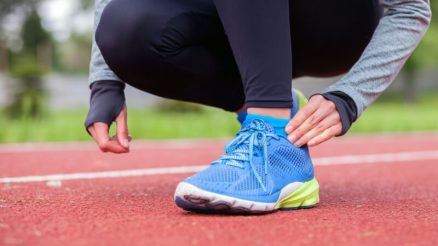Running shoes are an essential investment for anyone serious about fitness, whether you’re a marathoner, a trail runner, or someone who enjoys a few miles around the neighborhood. Proper storage and maintenance of your running shoes not only extend their lifespan but also ensure they continue to provide the support, comfort, and performance you need. Here’s a detailed guide on how to store and maintain your running shoes the right way.
1. Clean Your Shoes Regularly
After every run, especially in muddy or dusty conditions, give your shoes a quick clean:
- Remove dirt and debris: Use a soft brush or an old toothbrush to remove dirt from the outsole, midsole grooves, and upper mesh. Be sure to get into the treads where small rocks or debris might get stuck.
- Spot clean stains: Mix a few drops of mild detergent or dish soap with warm water. Gently scrub stained areas using a cloth or sponge, taking care not to soak the fabric excessively.
- Clean laces separately: Remove the laces and soak them in soapy water. Scrub lightly and rinse thoroughly.
- Avoid the washing machine: Machine washing can break down adhesives, warp foam, and damage lightweight mesh uppers, drastically reducing the life of your shoes.
2. Dry Them Properly
Moisture can degrade shoe materials and promote odor and bacteria growth.
- Air dry: Always let your shoes dry naturally at room temperature. Place them in a well-ventilated area and avoid stacking them against walls.
- Remove insoles and laces: Taking out the insoles and laces enhances airflow and accelerates the drying process. Clean them separately as needed.
- Use newspaper or shoe stuffers: Stuff the inside with newspaper, paper towels, or cedar shoe inserts to absorb internal moisture and maintain shape.
- Avoid direct heat: Never place shoes near radiators, fireplaces, dryers, or in direct sunlight for extended periods. Excessive heat can weaken glue bonds and deform EVA foam midsoles.
3. Store in a Cool, Dry Place
Where you keep your running shoes matters.
- Use a breathable shoe bag or rack: Keep your shoes in a ventilated shoe rack or mesh bag. Avoid sealing them in airtight plastic boxes, which trap humidity and foster mold growth.
- Keep away from extreme temperatures: High heat can cause adhesives to melt or soften, while freezing temperatures can stiffen materials and cause cracking.
- Rotate shoes: If you’re a frequent runner, owning at least two pairs and rotating between them allows each pair time to dry out, decompress, and extend overall lifespan.
4. Maintain Shoe Structure
Over time, shoes lose their shape and support. Here are ways to help them maintain form:
- Use shoe trees or stuff with newspaper: After each run, inserting cedar shoe trees or crumpled newspaper helps preserve the shoe’s original form and reduces wrinkles and creases.
- Loosen laces after running: Fully loosen the laces before removing your shoes. This prevents overstretching the opening and reduces stress on the eyelets, which can otherwise tear over time.
5. Track Shoe Mileage and Performance
Running shoes have a limited lifespan, typically around 300 to 500 miles depending on terrain, runner weight, and shoe model.
- Keep a log: Maintain a written log or use GPS-enabled fitness apps like Strava, Nike Run Club, or Garmin Connect to track mileage per shoe.
- Watch for wear signs: Monitor the outsole for excessive tread loss, look for compressed midsoles that don’t rebound, or notice if the cushioning and stability feel off. If you start to experience unusual aches or soreness, it may signal the need for replacement.
6. Deodorize Regularly
Odor is a common issue with running shoes, but it can be managed:
- Use baking soda: Sprinkle a teaspoon of baking soda inside each shoe and let it sit overnight. Shake it out the next morning.
- Try odor-fighting sprays or sachets: Place odor-absorbing pouches such as activated charcoal, tea bags, or cedar wood sachets inside the shoes when not in use.
- Wash insoles separately: If removable, take out the insoles once a week and wash them with mild soap and water. Allow them to air dry thoroughly before reinserting.
- Avoid wearing shoes without socks: Socks help absorb sweat and prevent bacteria buildup. Choose moisture-wicking socks to minimize odor.
Final Thoughts
Caring for your running shoes doesn’t have to be complicated. With a little attention after each run and proper storage habits, your shoes will stay fresh, supportive, and ready for many more miles. Remember, your shoes take care of your feet—return the favor by taking care of them. Maintaining them not only protects your investment but also supports your health and performance as a runner.








